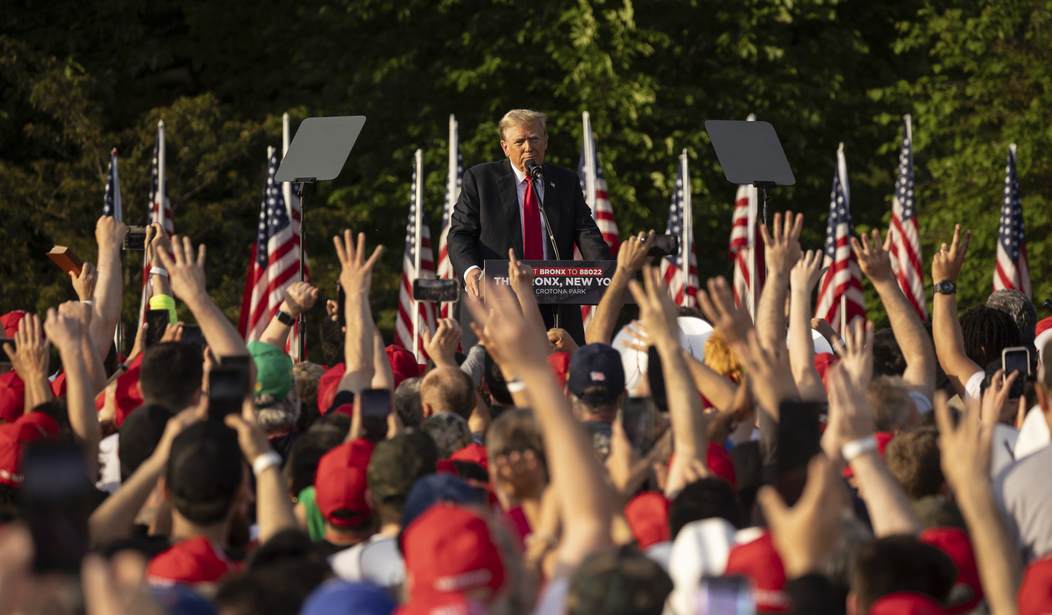For months now, Donald Trump has held a lead in the polls. Democrats have been, well, a bit panicked about it and are trying to find some silver lining to help keep the base hopeful and their wallets open. That silver lining has been the belief that Trump’s lead isn’t very stable because much of it comes from disengaged, low-propensity voters who aren’t necessarily likely to vote on Election Day.
"The polls have shown Donald J. Trump with an edge for eight straight months, but there’s one big flashing warning sign suggesting that his advantage might not be quite as stable as it looks,” wrote Nate Cohn of the New York Times last month. "That warning sign: His narrow lead is built on gains among voters who aren’t paying close attention to politics, who don’t follow traditional news and who don’t regularly vote."
Considering that Donald Trump continues to lead in both the RealClearPolitics and FiveThirtyEight averages in the wake of the New York City trial verdicts, that’s pretty much the best silver lining that Democrats can hope for. For them, their hopes rest on the idea that Trump’s lead in the polls is a mirage and all the people who are frustrated by Biden’s presidency are going to sit on their hands and not vote in November.
Perhaps there’s a point to all of this. Barack Obama won with the support of low-propensity voters, but that was arguably a different situation—a lot of people felt compelled to support him and be a part of the “historic” movement, yada, yada, yada. A Trump victory would be historic, as he’d be only the second president to win two non-consecutive terms, but that doesn’t exactly have the same cachet as “first black president."
So, let’s say, for argument’s sake, that Trump’s lead in the polls is due largely to low-propensity voters who can’t be relied upon to actually go out and vote. What can be done about that?
Former Republican congressman and New York gubernatorial candidate Lee Zeldin has a great idea on how to convert those supporters into votes. According to Zelda, the GOP needs to embrace early voting and focus their efforts on banking early votes with these “low propensity” voters.
"It's a lot better if we spend our time and effort trying to bank low propensity voters to try to get these people to vote early,” Zeldin said during an appearance on the "Just the News, No Noise" show. "And then we can focus our efforts on other people."
"Once those low propensity voters show up, then we don't have to spend resources knocking on their doors, making calls or spending money on mail and we focus on others," Zeldin added.
Many on the right have been reluctant to embrace early voting, but the fact is that as long as Democrats have gone all in with an aggressive strategy to bank early votes, they immediately start Election Day with a tremendous advantage. Last week, the Trump campaign and the Republican National Committee (RNC) unveiled their latest initiative to mobilize swing-state voters and promote the utilization of mail-in, absentee, and early voting methods, called the "Swamp the Vote" program.
I don’t like early voting or mail-in voting myself, but the fact is, if we’re not playing by the same rules as the Democrats are, we’re bound to continue to lose. And Zeldin believes that Trump’s lead in various states doesn’t take into account early voting, which will boost Biden.
"In some of these states, they have passed new election laws like in Pennsylvania with universal mail in balloting," he explained. "In Nevada, they have more early voting. They've legalized the ballot harvesting."
Without a doubt, Republicans have to embrace early voting if they want to be a position to kill it.
Let’s hope that “Swamp the Vote” works.










